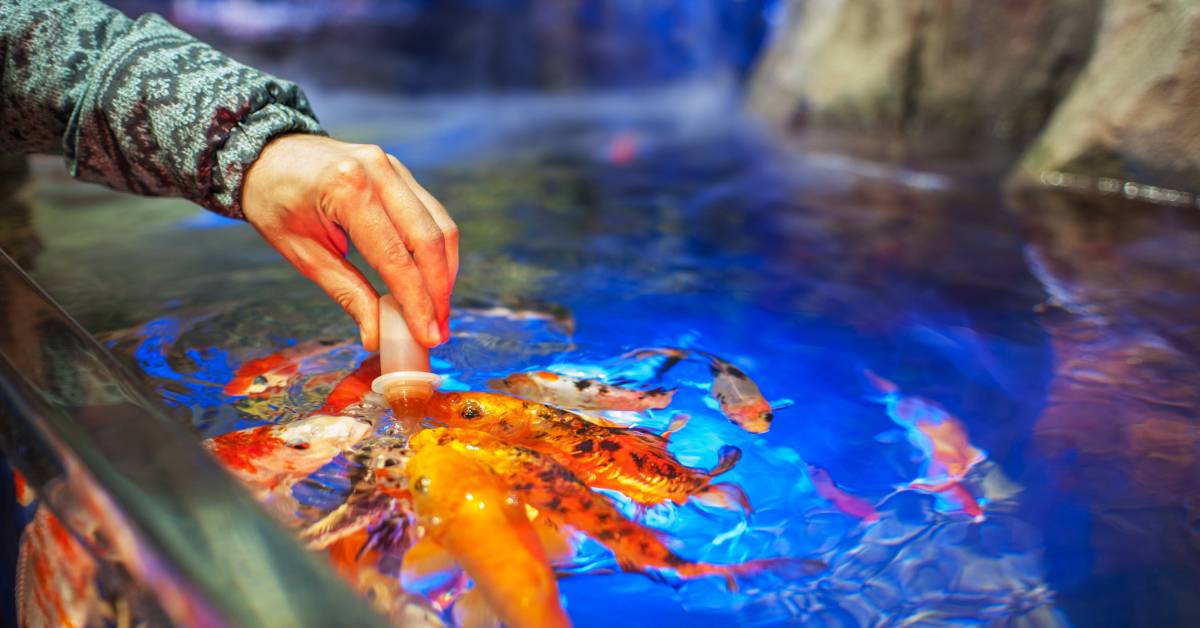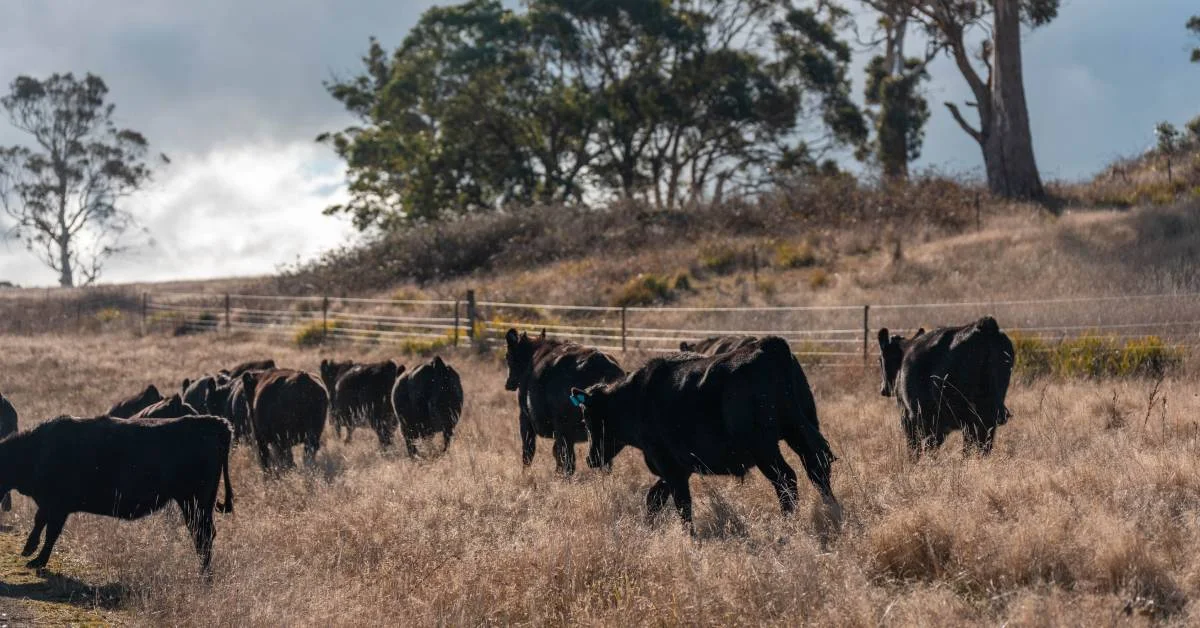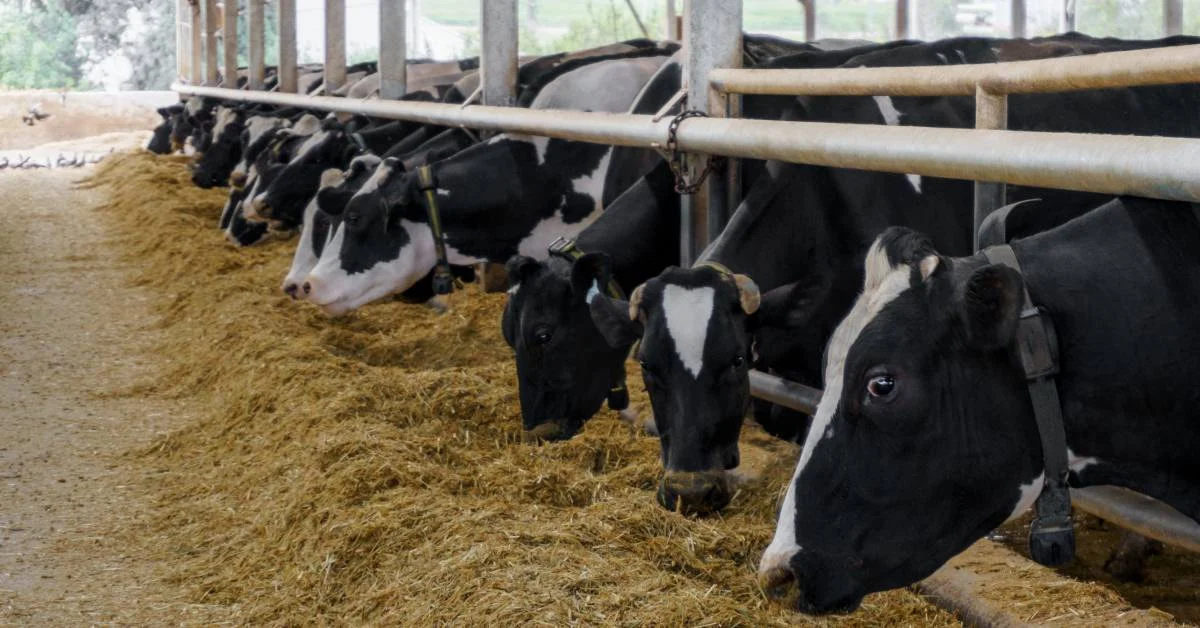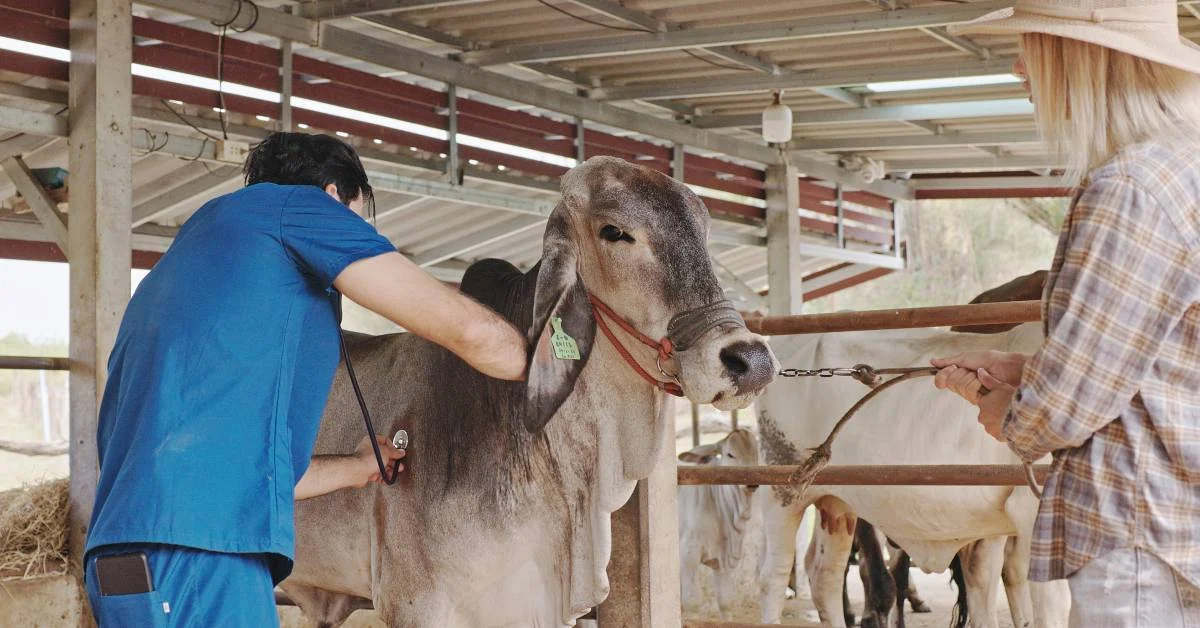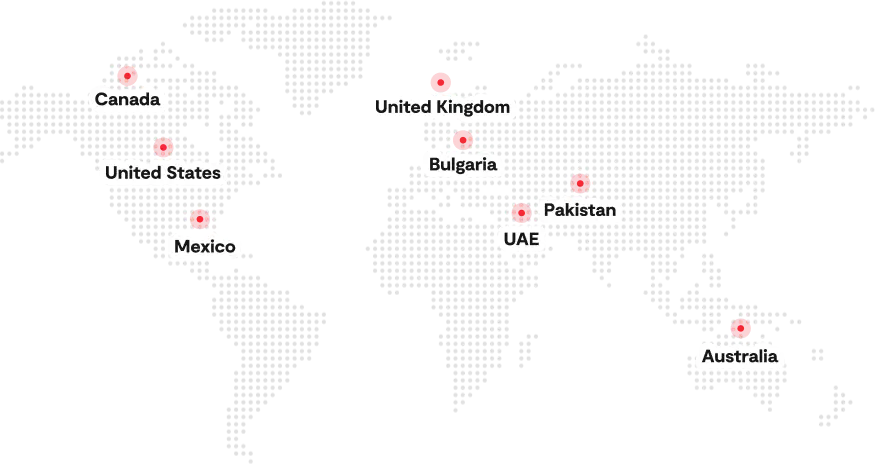One of the most important decisions in any fish farming setup is the type of feed used. Feed isn’t just something you toss into the water. It’s the biggest operating cost in aquaculture, and it plays a major role in fish health, growth, and overall farm performance. That’s why aquaculture feed is getting so much attention and investment in modern fish farming.
According to research and markets, in 2024, the global aquafeed market reached $64.11 billion, up from $59.14 billion in 2023. That’s a healthy 8.4% growth in just one year, showing how fast the industry is moving toward more advanced feeding options. The market is now expected to reach $86.19 billion by 2028, with a forecasted CAGR of 7.7%.
In this blog, we’ll break down how aquaculture feed compares to traditional feed options, looking at nutrition, efficiency, cost, and sustainability to help you decide what’s best for modern, performance-driven fish farming. But before we get into the comparisons, let’s take a closer look at what defines both.
What Is Aquaculture Feed?
Aquaculture feed, commonly referred to as aquafeed, is a nutritionally balanced, scientifically formulated diet designed specifically for farmed aquatic animals like fish, shrimp, and other species. Unlike traditional feeds that rely on raw or leftover food scraps, aquaculture feed is purpose-built to meet the dietary needs of specific species at various growth stages.
Modern aquaculture feeds are formulated using three primary ingredient categories:
- Marine-based: Includes fishmeal, fish oil, and trimmings from fish processing. These ingredients are protein-rich and traditionally used for their high digestibility and omega-3 content.
- Plant-based: Increasingly popular, these ingredients include soybean meal, wheat, sunflower, and rapeseed. Plant-based formulations help reduce dependency on marine resources and can be more sustainable.
- Additives: These include amino acids, enzymes, vitamins, minerals, and probiotics to enhance digestion, growth, and immunity.
Each formulation is carefully tailored to species-specific requirements, ensuring optimal growth performance, improved health, and improved feed conversion.
What Counts as Traditional Fish Feed?
Traditional fish feed includes readily available and often inexpensive inputs such as raw fish, rice bran, poultry droppings, and kitchen or farm scraps. These types of feed are still commonly used in small-scale or legacy systems due to their accessibility, low upfront costs, and familiarity among rural farmers. However, there are several key drawbacks:
- Nutrient inconsistency: Traditional fish feeds often lack essential nutrients or have fluctuating quality from batch to batch, which negatively affects fish growth and health.
- Environmental risks: These feeds can degrade water quality due to higher organic waste, leading to issues like oxygen depletion and harmful algal blooms.
- Disease risk: Unbalanced or contaminated feed sources can introduce pathogens or weaken fish immunity, increasing mortality rates.
While traditional fish feed may still play a role in very low-budget or transitional systems, it is not well-suited to the demands of modern aquaculture, which require consistency, feed and livestock traceability, and optimized performance. To really understand the difference, let’s put both feed types head-to-head.
Aquaculture Feed vs. Traditional Fish Feed: A Full Comparison
When choosing between aquaculture feed and traditional fish feed, it’s important to look beyond upfront costs. The right feed affects everything from growth rates and feed efficiency to environmental impact and overall farm profitability. Below is a side-by-side comparison to help clarify the key differences that matter most in modern fish farming.
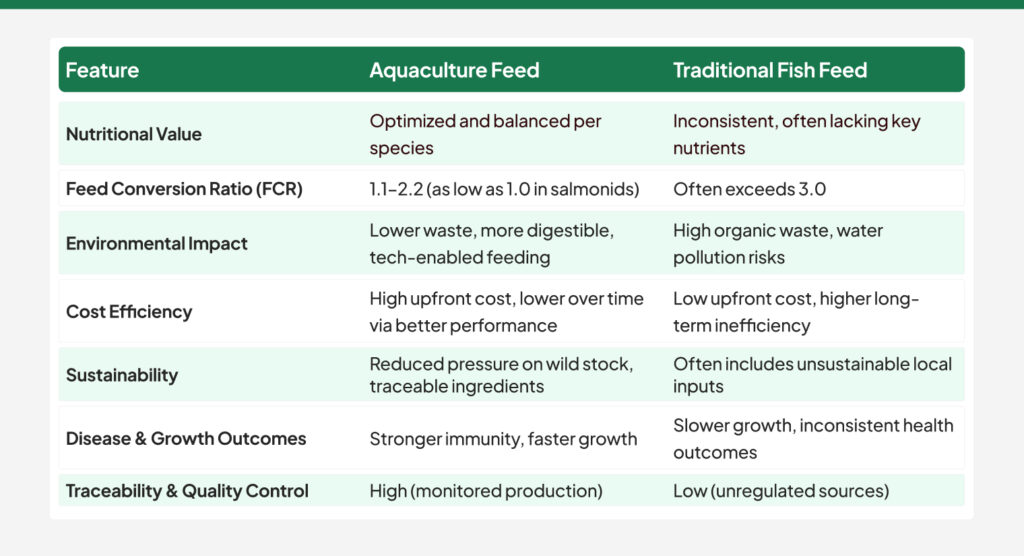
As the comparison clearly shows, aquaculture feed outperforms traditional fish feed across nearly every key metric from feed conversion and growth outcomes to long-term sustainability and cost efficiency. These differences aren’t just technical; they translate directly into better harvests, healthier fish, and higher profitability. Let’s explore exactly how it delivers these advantages in real-world farming systems.
Why Aquaculture Feed Is Better for Modern Fish Farming
With up to 70% of total production costs tied to feeding, the quality and consistency of that feed can make or break an operation’s success.
Aquaculture feed is specifically formulated to meet the nutritional needs of different species at various life stages. It goes beyond simply providing calories; it plays a direct role in fish health, growth rates, water quality, and even the sustainability credentials of the farm itself. Compared to traditional fish feed options, aquaculture feed offers measurable and consistent advantages that align with the goals of scalable, modern fish farming.
Key Advantages of Aquafeed in Modern Operations:
Consistent Growth Cycles
Aquaculture feed formulations are precision-designed for specific species like tilapia, carp, or salmon. These feeds are engineered with ideal protein, lipid, and micronutrient levels that support predictable growth and reduce variability in harvest size. This consistency enables better production planning, improved harvest scheduling, and higher overall output quality.
Lower Mortality Rates
Poor nutrition is one of the leading causes of fish mortality, especially in dense farming systems. High-quality aquaculture feeds contain bioavailable nutrients that support immune function, reduce oxidative stress, and help fish better tolerate suboptimal environmental conditions. This directly translates to lower losses and more stable production.
Reduced Antibiotic Use
When fish are fed balanced, digestible diets rich in essential amino acids and fortified with immune-boosting additives (like probiotics or prebiotics), their natural defenses strengthen. This reduces disease outbreaks and significantly cuts the need for antibiotics, supporting both animal welfare and regulatory compliance, especially for export markets.
Regulatory Compliance
Global aquafeed markets are tightening their standards for food safety and environmental impact. Many countries now require detailed traceability in feed inputs and prohibit cross contaminants like heavy metals or dioxins. Commercial aquaculture feed producers meet these demands through rigorous food quality control, sourcing transparency, and certifications, making them the safer, legally viable choice.
Tech Compatibility
Aquaculture feeds are designed with particle size, buoyancy, and digestibility in mind, traits that sync well with automated feeding systems. Whether using AI-powered feeders, sensor-triggered delivery, or data-driven ration planning, aquafeed supports smarter farm management. This compatibility allows farms to reduce feed waste, optimize feed conversion ratio, and monitor fish performance in real time.
How Modern Fish Farms Are Feeding Smarter
Modern fish farming is no longer about tossing feed by hand and hoping for results. The industry has shifted toward data-driven decision-making, where feed management is just as strategic as stocking or harvesting. Today’s fish farms are under pressure to produce more with less waste, less labor, and less environmental impact. That means feed systems need to be accurate, efficient, and responsive.
To achieve this, farms are increasingly investing in the top aquaculture technologies today feeding strategies that prioritize precision and adaptability. These tools not only help optimize feed utilization but also support broader goals around sustainability and compliance.
Key tools and practices enabling smarter feeding include:
- Automated Feeders: These systems deliver feed with pinpoint accuracy, ensuring each batch of fish gets the right quantity at the right time. They eliminate the guesswork of manual feeding and significantly reduce waste in both uneaten feed and labor hours. Many modern feeders also allow remote control and scheduling.
- AI-Based Optimization: Using data from environmental sensors and behavioral patterns (like how quickly fish consume feed), AI-powered software can adjust feeding rates in real time. This means feeding decisions are based on actual conditions and not assumptions, resulting in healthier fish, less feed loss, and better growth rates.
- Nutrient Analysis via NIRS (Near-Infrared Spectroscopy): This non-destructive technique allows farms to rapidly assess the nutrient composition and digestibility of feeds. With a margin of error as low as ±1–3% for key nutrients, farms can fine-tune diets based on species, age, and environmental changes, ensuring consistent nutritional delivery.
- Integrated Data Dashboards: Many advanced farms now use platforms that centralize data from multiple sensors like oxygen levels, temperature, pH, and feeding history. These insights feed into predictive models that suggest the best feed types, timing, and portions.
- Feed Storage & Inventory Management Integration: Modern aquaculture ERP systems now connect feed usage directly with storage monitoring, expiry tracking, and automated reordering. This ensures feed quality is never compromised and helps prevent overstocking or running out during critical growth cycles. By integrating feed inventory data with traceability tools, farms can track any feed batch going to any pond which is vital for compliance, audits, and overall transparency.
Together, these technologies create a tightly managed feedback loop between feed inputs and fish performance. The result? Lower feed conversion ratios, better fish health, and improved environmental outcomes. Smart feeding isn’t just about saving money; it’s about future-proofing your farm. As regulations around sustainability, traceability, and efficiency tighten, data-backed feeding gives modern fish farms the control and flexibility they need to stay ahead.
How Folio3 AgTech Is Transforming Aquaculture Feeding
Folio3 AgTech is at the forefront of integrating aquaculture feed strategies with its aquaculture management system. By aligning feed delivery with environmental conditions and species-specific requirements it enables precision nutrition at scale. This not only boosts production efficiency but also supports sustainability goals by minimizing waste and improving overall fish health.
Some features and benefits of our platform include:
Folio3 AgTech’s ecosystem seamlessly connects feed inputs to fish health outcomes and production KPIs, supporting better decision-making and improved profitability. It empowers seafood businesses to track every step of the production cycle with precision. From pond to processor, the platform ensures full visibility, compliance, and control.
Conclusion
When comparing traditional fish feed and aquaculture feed, the choice for modern fish farming is clear. Aquafeed provides consistent nutrition, better conversion rates, lower waste, and long-term economic benefits. While traditional fish feeds may still have a place in very small-scale systems, they fall short on almost every metric that matters for commercial scalability. Feeding strategies aren’t just operational decisions; they’re strategic ones. The combination of high-quality aquafeed with smart technologies represents the future of sustainable, competitive aquaculture. If you’re aiming to grow a modern fish farm, feed choice isn’t just a detail; it’s a differentiator.
FAQs
What Is The Best Feed For Aquaculture?
The best feed depends on the species being farmed, but high-quality aquafeed specifically formulated for nutritional needs is ideal. These feeds offer balanced proteins, fats, and essential micronutrients, often with marine or plant-based ingredients. They ensure better growth, health, and feed efficiency compared to traditional fish or raw fish feed options.
What Are Live Feeds For Aquaculture?
Live feeds are living organisms used to feed larval or juvenile aquatic species. Common examples include rotifers, Artemia (brine shrimp), and copepods. They’re crucial in early life stages when fish or shrimp have underdeveloped digestive systems and require easily digestible, nutrient-rich food.
What Are The Methods Of Feeding In Aquaculture?
Feeding methods vary but commonly include manual feeding, automated feeding systems, demand feeders, and programmed feeding schedules. Modern systems increasingly rely on AI-driven automated feeders that optimize feed distribution based on fish behavior and environmental conditions.
What Are The Disadvantages Of Natural Fish Feed?
Natural feed sources like kitchen scraps, raw fish, or poultry waste often lack consistent nutrient profiles. They can lead to poor growth, higher disease risk, water pollution, and inefficient feed conversion. Additionally, they’re not traceable or standardized, making regulatory compliance difficult.
What Foods Are Grown Using Aquaculture?
Aquaculture is used to produce a variety of foods, including fish (like salmon, tilapia, and catfish), crustaceans (shrimp, prawns, crabs), mollusks (clams, mussels, oysters), and even aquatic plants like seaweed and algae. These contribute significantly to global seafood supply chains.

